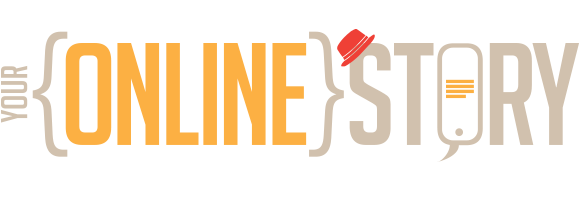From 1994 to 2015, the Standish Group’s Chaos Reports provided this answer.
What’s a Chaos Report? Well it’s a report on IT (information technology) project failures.
It was groundbreaking research.
In 1994, Jim Johnson and his Standish Group looked into IT project failures. They wanted to know why so many projects failed, and how to reduce those failures.
They found some staggering numbers in the first report.
84% of projects either failed or faced significant challenges. Imagine that! Almost half of the developed features were never used. 31% of projects got cancelled before completion. 52% of projects cost 189% of their original estimates.
It was pretty bad news for IT.
The Standish Group kept releasing Chaos Reports. Over the years the figures averaged out to around a 70% failure rate. The main culprits they identified were poor planning or ignoring good plans. The Standish Group kept collecting data.
This ‘crisis’ model categorised IT projects as successful, challenged, or failed. Time, scope, and budget were the data points.
Critics pointed out focusing on time, scope, and budget was too traditional and narrow. Early Chaos Reports painted a bleak picture of IT. They didn’t tell you how to fix things. Critics felt they also highlighted a ‘crisis’ that was more illusion than reality.
By 2015, the Standish Group reviewed their methods and stopped publishing. After two decades, they realised it was time for a change.
The 2015 report concluded that project success had not improved. Even with new processes, tools, and oversight.
The 2015 report concludes:
Over the last 20 years the project management field has experienced increasing layers of project management processes, tools, governance, compliance, and oversight. Yet these activities and products have done nothing to improve project success.
This didn’t stop other groups from having complementary insights.

Project Size and Volatility
In 2007, Chris Sauer, Andrew Gemino, and Blaize Horner Reich published: “The impact of size and volatility on IT project performance”.
They started in 2002 surveying readers of the UK’s popular Computer Weekly newspaper. In particular readers who identified as project managers. They enrolled in the survey by email, and responded through a web based form.
The data covered effort, duration, team size and budget. They tracked changes in project manager and sponsor. They tracked changes in schedule, budget and scope. They tracked the project performance.
This article in Communications of the Association for Computing Machinery has more.
They found that:
- Project Size: The larger a project is, the greater the risk, no matter the project manager’s experience. Focussing on team size, effort and duration limited the risk. They found that 25% of projects still underperformed no matter the size.
- Volatility: Projects with no people changes still faced a 22% risk of underperforming. This rose to 50% when two or more people left. Projects with 9 or fewer changes of any type faced a 33% risk of underperforming. Projects with over 9 changes of any type also rose to a chance of 50% failure. Any type being personnel, scope, schedule, budget or governance.

Everyone loves a comeback
Having pivoted, it took six years for the Standish Group to publish a new report. In 2021, they released the “CHAOS Report Beyond Infinity”. It’s a 260-page book priced at $550 USD (at time of publication).
The report identified new factors affecting project success. These were Poor Decision Latency, Low Emotional Maturity, Good Place, Good Team, and Good Sponsor. They also introduced Flow Centric Project Management.
The report expanded the group’s focus. It enabled them to address more contemporary project management concepts.
Decision Latency and Low Emotional Maturity
- Poor Decision Latency: is a delay in making critical decisions. It can lead to missed deadlines, increased costs and failure.
- Low Emotional Maturity: is often linked to Poor Decision Latency. This can be in an individual, team or organisation. It’s the ability to handle stress, communicate and resolve conflict. It’s feeling empathy, being flexible and making decisions. Lack of these qualities slows down decisions. This leads to missed opportunities and increases risk.
Good Place, Good Team, Good Sponsor
- Good Place: is a supportive and productive environment. It’s access to resources and a positive work culture.
- Good Team: is having skilled, motivated, and well-coordinated team members. Collaboration is key.
- Good Sponsor: is strong leadership and supportive project sponsors. They provide guidance, resources, and advocacy.
Flow Centric Management
- Flow Centric Project Management: focuses on continuous change in small increments. It reduces the reliance on traditional budgets and plans. Instead it emphasises continuous delivery and adaptation.

Modern Methods
Modern methods have evolved from these approaches. They emphasise collaboration, continuous improvement, and customer satisfaction. Today’s projects are more integrated. The project is important, though the focus is on the product and experience.
Here are some key components to consider:
- A Product Requirements Document (PRD): outlines the essential features, functionalities and specifications. The PRD serves as a blueprint for the implementation team. It ensures everyone understands the project’s goals, user needs, and technical requirements.
- Ontology: is a way to structure and categorise information within a project. The word “ontology” originates from the Greek words “ontos” (ὤν), meaning “being” or “existence”, and “logos” (λόγος), meaning “study” or “science”. It’s used in various fields, including information science and computer science. It helps create a shared understanding of complex data and relationships. It ensures everyone on the team is on the same page communicating . It can connect Research, System Actors, User Journeys, Service Design, Prototyping and Testing.
- Agile Project Management: Breaks projects into small, iterative sprints (blocks of work). These are two to four weeks long. Each sprint focuses on specific tasks. This allows teams to develop, test, and refine in stages. Projects have “Epics”, broken down into “user stories”, and managed by a Scrum Master. Agile emphasises connecting product development with customer experience.
- Flow Centric Project Management: emphasises a continuous flow of work. It is less prescriptive than Agile. It focuses on ongoing delivery and adaptation.
- Lean Methodology: aims to achieve more with less by focusing only on what adds value to the customer. It removes tasks or processes that do not contribute to the final product. Developed for manufacturing, lean principles have been adapted for software development.

Design Thinking
Modern projects enjoy improved design thinking, which goes beyond colour and layout. These are complementary aspects of a comprehensive project management approach.
- Design Thinking: A user centred approach to problem solving that emphasises empathy, creativity, and iteration. It involves five stages: empathise, define, ideate, prototype, and test. By focusing on users’, teams can brainstorm, prototype, and test innovative solutions. This approach fosters creativity and collaboration. It ensures that the end product is functional, intuitive, and engaging.
- Human-Centred Design: puts the user at the heart of the project. It focuses on understanding the needs, behaviours, and experiences of the end users. It often includes user research, prototyping, and iterative testing. It ensures the final product meets the needs of users. Human-Centred Design helps to create products with higher user satisfaction and engagement.
- Atomic Design: is a method for creating design systems. It breaks projects into small, basic components called “atoms”. These atoms combine to form larger structures like “molecules”, “organisms”, “templates” and “pages”. Additionally, design tokens define and maintain consistent design properties. For example colours, typography, and spacing. This modular approach ensures scalability, reusability, and consistency. It allows teams to adapt and develop cohesive interfaces.
- Design Frameworks: Provide structured guidelines, best practices, and reusable components for developing projects. Frameworks like Fluent 2, Material Design and SwiftUI ensure consistency, efficiency, and quality. They streamline design and development. They enable teams to follow standards, integrate features, with a consistent look. This improves collaboration and speeds up time-to-market.

Delivering Value
The evolution of project management has given us great insights into effective delivery. It’s given us some amazing business and technology tools. I think it’s also given us greater connection to our products and customers.
The way we deliver projects and products is going to continue to evolve. The types of products and services we have to deliver are going to also evolve.
Try thinking about and incorporating these methods. Discuss them with your team. Let us know about any other methods you use in your projects.
Delivering value for customers remains a constant.
Still. “Don’t screw it up alright!”
Virgil Reality…


